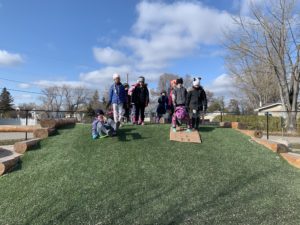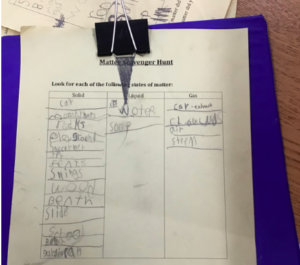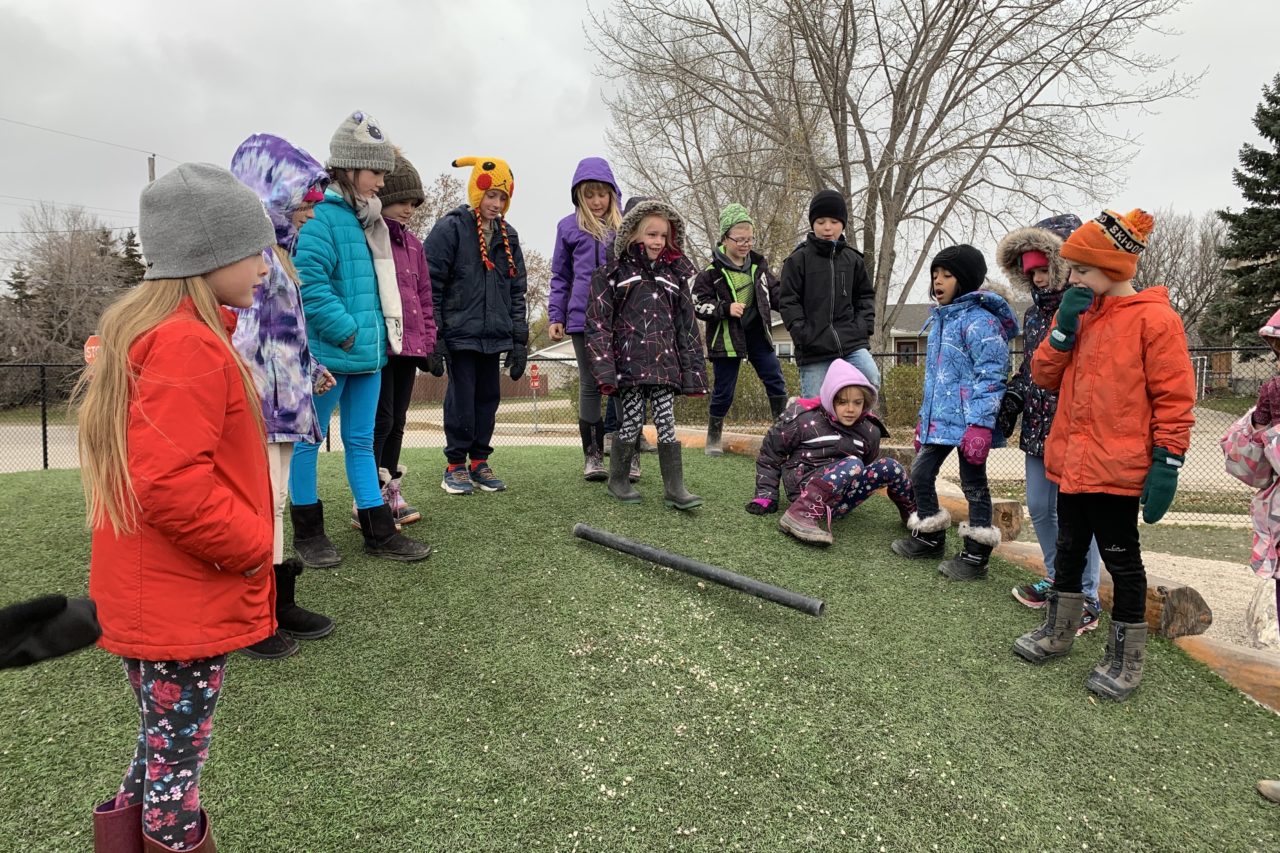“Let’s take our students outside twice a month, minimum. Let’s document what we’re doing when we go outside.”
During our deeper learning team meeting in October, the grade 2 teachers at NES (Kate Hawgood, Bonnie Anderson, Courtney Savary and Sheila Krahn) wanted to explore how to use their new outdoor learning environments while learning about how Indigenous understandings and teachings of the land can support learning in public school spaces. They set a goal to go outside twice a month and document what they were doing and noticing in their students. They are keeping their documentation on a google site so they can support and learn from each other.

“Each child was given a clipboard to take with, and they had to record things that they saw, somehow record their findings. Some wrote building numbers, while others wrote street names, and others drew maps of the street. It was great to see how different some of their recordings were.”
“We went out to find solids, liquids and gases that we saw on or around the playground (even across the street at the car wash, buildings, vehicles, etc.”


“They had races down the hill to see what types of rolling materials go faster and discussing why we think each one won.”
“The kids had to find something that created or used a push or pull motion. They needed to show me the motion and tell me what it needed, a push a pull or both.”
We don’t know yet, how this goal will impact and influence our teaching decisions. We don’t know the ways in which this goal will impact and influence students. We are teacher researchers in this inquiry. We know that time outdoors is good for the social emotional health of children. We believe that the curriculum lives outdoors as much as in our classroom. We are curious to come together later in the year to share and analyze the data we are collecting on the google site.
